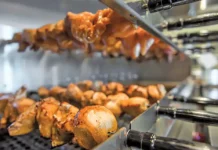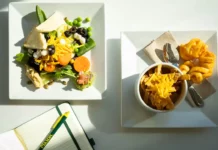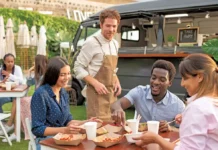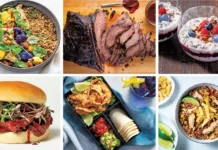Espresso graced the world with its presence at the 1906 World’s Fair in Milan, Italy. Two men, Luigi Bezzera and Desidero Pavoni reengineered an earlier model of an espresso machine by Angelo Moriondo and unveiled it to the masses. Thanks to the US coffee industry’s “second wave (referring to the Starbucks led specialty coffee expansion),” espresso based beverages went mainstream.
Now, with the “Third Wave (referring to boutique cafes meticulously preparing specialty coffee and espresso drinks while educating consumers on the coffees traceability)” in full swing, properly prepared espresso drinks are being consumed at an increasing rate throughout cafes all over the US. Restaurants are in pursuit trying to capture this immense growth in the profitable espresso category.
Although espresso machines give restaurants and food service establishments a larger range of beverages over drip coffee brewers, most restaurateurs put an emphasis on drip coffee. The only logical explanations I can wrap my head around are first, restaurateurs don’t understand the capabilities of espresso, and second is that drip coffee machines traditionally are on consignment from roasters while espresso machines are purchased, I will dive into this later. With a well-trained barista at the helm, an espresso machine’s capabilities can exceed that of a drip coffee machine. You can pull shots of espresso, craft beautiful lattes, cappuccinos and macchiatos, prepare Americanos, and even enhance certain desserts like affogatos.
There are several things to think about when you’re getting into the espresso business. Do you want to use espresso pods, proprietary capsules, pre-ground espresso, or whole beans? I don’t recommend pre- ground espresso; it’s inefficient, and becomes very wasteful due to grounds being spilled all over the counter. Between espresso pods and proprietary capsules, I choose espresso pods. Pods are better because they cost only around 35 cents per serving versus capsules, which cost around 75 cents per serving. Also you need a proprietary machine dedicated for ONLY those capsules. With pods, you need only change the screens in the portafilter. So if you decide to upgrade to a grinder and whole beans, all you have to do is change the screen and not buy a whole new machine. Whole beans however, are the most cost effective form of espresso. Although it may cost you upfront for the grinder, over the long term it will save you substantially. You can pull about 65 shots of espresso per pound (lb.) of coffee. At $9 per lb. that only costs you 14 cents per shot! If you bought an espresso grinder for $1,000 and you did about 20 drinks per day, that grinder would pay for itself in UNDER 3 months! Not to mention the quality of extraction from fresh ground espresso compared to pods is undeniably better. You will even have more options of espresso. You can try traditional dark espressos blends, light roasted specialty blends giving more citrusy notes, or even single origin espressos. None are right or wrong; it’s a matter of what is right for your restaurant and its consumers.
Profits in espresso can be substantial. Let’s say you develop a description of your espresso origin, roast and flavor profile then list it on your menu for $3. If you average 20 drinks per day at a cost of 14 cents, you will net just shy of $21,000 a year!!
When find yourself in the market for an espresso machine, you’ll realize that a reliable commercial model is NOT a small investment. New espresso machines typically start around $4,000 and can exceed $25,000!! If you have a good relationship with your coffee roaster, they can typically sell/lease you these machines for less than the list prices.
Many restaurateurs face the decision: do they want quality product or do they want to keep it simple for their staff? Having a relationship with a roaster who knows espresso is paramount. They can help guide you to the right espresso machine, which can save you thousands of dollars and headaches. Many choose super-automatic espresso machines like you see in multi-unit chain cafes because they don’t want to train their staff. Here’s where you leverage your roaster to train you AND your staff. Ultimately you’ll create better quality shots of espresso and save money on your espresso machine purchase. Their calibration should allow you to achieve the best shot of espresso possible. Factors to include while you’re shopping are; budget, restaurants seating capacity, beverage volume, space (front of house or back of house), electric and plumbing available, the staff’s ability to learn how to prepare drinks, and MOST importantly the roaster’s capability to service the espresso machine! If you don’t have someone to service it, DON’T buy it!
If you try to buy a used one, find out where it was used, and if it was used in an area known to have hard water. If you doubt it had any softening system, run away from the machine. It will become a money pit.
It’s vital to the success of your espresso program to maintain your espresso machine. Wiping the outside of the machine and back-flushing the group heads every night is a start. I can’t tell you how many restaurants I’ve walked into where I pull a shot of espresso, water leaks from all around the portafilter. Their first thought is that they need a new espresso machine, but it’s a quick $15 fix. ABSOLUTELY NO espresso machine will be maintenance free; these machines are like cars and need to be routinely looked at and diagnosed by a professional. Hard water (water with calcium and lime), identified by white buildup around water spouts like in a shower causes 90% of the problems. This is why it’s imperative to have a water softener installed and routinely changed. Warranties are typically void if you don’t use one. You should also use water filters to help remove any chemicals such as chlorine applied to the water. My company, Law Coffee Co. (www.LawCoffee.com) offers preventative maintenance programs for our customers. Paying extra for these programs is insurance that your machine doesn’t go down resulting in lost sales and upset customers. In the Metro NYC area, there are also independent equipment repair companies, like Java Techs (www.javatechs.com), that will repair and install many brands of machines.
Espresso is 110 years old but the American consumer is just becoming aware of what quality shots of espresso are. A commitment to a successful espresso program starts with the right espresso blend with the right machine and continues right through the server preparing and serving the drink to the consumer. Don’t let your customer leave your restaurant disappointed by serving them a sub-par espresso. They should leave your establishment in a state of euphoria by ending the perfect meal with an exceptional espresso.
























Comments are closed.